The XPG Fusion 1600W aims at the category’s top and it is one of the few PSUs to utilize a digital design along with GaN MODFETs and a totem-pole topology, trying to dethrone the aging Corsair AX1600i. Will it successed in this? Read the full review to find out!
The XPG Fusion 1600W is included in my best ATX v3.0 & PCIe 5.0 PSU picks article.
For more than five years now, the Corsair AX1600i has been on top of my performance charts because it uses an innovative design, which includes a digitally controlled totem-pole bridgeless PFC, offering top efficiency. Wentai tried to use the same totem-pole design with not-so-good results because most of its PSUs failed after a while. Several other OEMs also attempted to use the same design. Still, they failed because it needs a special recipe to program the PFC’s digital controller, which only Flextronics engineers have achieved so far. Unfortunately, Flextronics will leave the desktop field soon, so that the AX1600i won’t have an ATX v3.0 successor, from Flextronics at least.
XPG is trying hard to compete in the tough PSU market, and with a highly experienced PSU engineer in its arsenal, Alvin Chan, it is already faring pretty well. For quite some time, Alvin mentioned that he wants to build a top PSU that will meet the Corsair AX1600i eye-to-eye, and I was responding to him that this is quite difficult unless he manages to convince Flextronics to make something. In the end, Delta Electronics, one of the largest PSU OEMs, decided that it was high time to enter the desktop PSU market after many years of absence, and it decided to take on a challenging project, which aimed at a PSU good enough to take the performance crown from the Corsair AX1600i.
During Computex 2023, XPG/ADATA revealed project Zeus, where a Fusion 1600 was powering four NVIDIA RTX 4090s simultaneously, and according to Powenetics v2, which was installed in the test system, power consumption was close to 2 kW frequently. Given that the Fusion managed to survive several days of continuous load under these extreme conditions, it seems to avoid the reliability problems of the Wentai Aidan 1616. Still, as usual, I will test it thoroughly during this review to see if it can deliver what it promises, top-notch performance.
To achieve top performance, the Fusion uses a new platform by Delta, where digital controllers, including the totem-pole PFC on the primary side, handle all major PSU functions. The big thing with totem-pole PFC is that it uses gallium nitride FETs (MODFETs) instead of silicon ones (MOSFETs). Due to their extremely low gate charge and output capacitance, GaN FETs can be switched at extremely high speeds with reduced switching losses and improved efficiency compared to MOSFETs. Moreover, GaN FETs offer up to 40% more power density than MOSFETs, and their faster switching speeds help minimize the dimensions of other components, especially transformers. This is why in most high-capacity laptop power adapters, GANs are used instead of MOSFETs.
Since this is the first GaN PSU that I have reviewed on this site, I will use some diagrams that I used five years ago in my AX1600i review to explain the topology differences between “normal” high-end PSUs and the ones with a totem-pole PFC.
This is the block diagram of a typical modern PSU platform. There is a power factor correction stage that optimizes power grid efficiency. The PFC circuit operates as a boost converter, providing a DC output voltage close to 380V. This voltage needs to be stepped down to provide a DC bus supply that the system can utilize. A number of topologies are viable for this stage, but inductor-inductor-capacitor (LLC) and phase-shifted full-/half-bridge are commonly used to generate the 12V rail. The same rail, 12V, is routed throughout the system, undergoing multiple conversion steps to power CPUs, GPUs, memory, storage, and more. In other words, the minor rails, 5V and 3.3V, are generated through the 12V rail.
This is the block diagram of a PSU utilizing GaN MODFETs and a totem-pole PFC converter. The PSU’s architecture and density change due to the special features of GaN components. Below I will highlight the major differences:
- PFC: By utilizing a totem-pole topology, GaN devices reduce the number of active power switches (FETs) and filtering inductors by 50%. Moreover, a significant increase in switching frequency, which can reach up to 10x, significantly reduces the size of magnetics while improving overall efficiency to over 99% (versus 96% for today’s Titanium-class power supplies). In other words, you can use smaller coils/chokes/transformers thanks to the higher switching frequencies.
- LLC Resonant Converter: The DC/DC stage uses GaN’s superior switching characteristics to push the resonant converter switching frequencies to over 1 MHz. A higher frequency reduces transformer size while improving power density and efficiency.
Another significant advantage of GaN components is the Point of Load (PoL) DC/DC. GaN has a substantial impact on those converters. First, it enables a single-step conversion from 36-60V to power the system’s hardware, reducing the number of components needed and allowing for smaller, in size, PSUs. Additionally, the smaller footprint of a GaN-based solution allows to easily stack the power stages for different load demands and place them close to the load for better/faster transient performance. This means there is no need for multiple rail outputs (12V, 5V, and 3.3V), which currently impose a two-step conversion. The individual components can generate all required voltages from a single voltage output. Nowadays, most parts have their own DC-DC converters. But they don’t all use the same voltage. With GaN-based solutions, those components can generate the needed rails from a single, higher voltage rail without increased losses, all while using fewer components in a more compact chassis. This is the main logic behind ATX12VO, which doesn’t seem to prevail.
XPG-Prime App
Since the Fusion is a digital PSU, it can communicate with the system providing lots of interesting information through the corresponding application, XPG-Prime. There are four main options: Main, Power, Thermal Control, and History.
The Main page shows the PSU’s basic information, including DC and AC Wattage, efficiency, and temperature. Moreover, you can toggle on/off the single 12V rail mode, which is recommended to enable if you plan to feed a power-hungry system.
From the Power page, you can toggle on/off the single 12V rail mode (again), adjust the voltage on the 12V rail, and also set OCP, OVP, and UVP protection features.
The Thermal Control page allows you to adjust the fan speed profile according to your needs. There are three presets, performance, balanced, and silent, and there is also a manual mode. You can also set the over temperature protection triggering point from this page.
The PSU’s log is kept on the History page, where you can select what to see on the corresponding graph.
- Manufacturer (OEM): Delta Electronics
- Max Power: 1600W
- Cybenetics Efficiency: [115V] Cybenetics Titanium (91-93%)
- 80 Plus Efficiency: Titanium
- Noise: Cybenetics Standard++ (30-35 dB[A]) [Review Sample]
- Compliance: ATX v3.0, EPS 2.92
- Operating Temperature (Continuous Full Load): 0 – 50°C
- Alternative Low Power Mode support: Yes
- Power 12V combined: 1600W
- Number of 12V rails: 1
- Power 5V + 3.3v: 120W
- Power 5VSB: 17.5W
- Cooling: 135mm Double Ball Bearing Fan (Hong Hua HA13525H12SB-Z)
- Semi-Passive Operation: ✓
- Modular Design: Yes (Fully)
- High Power Connectors: 2x EPS (2x cables), 6x PCIe 6+2 pin (6x cables), 2x PCIe 12+4 pin (600W)
- Peripheral Connectors: 12x SATA (3x cables), 4x 4-pin Molex (2x cables)
- ATX Cable Length: 640mm
- EPS Cable Length: 750mm
- 12VHPWR Cable Length: 650mm
- Distance between SATA / 4-pin Molex: 150mm
- In-cable capacitors: No
- Dimensions (W x H x D): 150 mm x 85 mm x 210mm
- Weight: 2.53 kg (5.58 lb)
- Warranty: twelve years
- Street price (excluding VAT): $700
Power Specifications
| Rail | 3.3V | 5V | 12V1 | 12V2 | 12V3 | 12V4 | 12V5 | 12V6 | 5VSB | -12V | |
| Max. Power | Amps | 20 | 20 | 50 | 50 | 50 | 50 | 50 | 50 | 3.5 | 0.3 |
| Watts | 120 | 1600 | 17.5 | 3.6 | |||||||
| Total Max. Power (W) | 1600 | ||||||||||
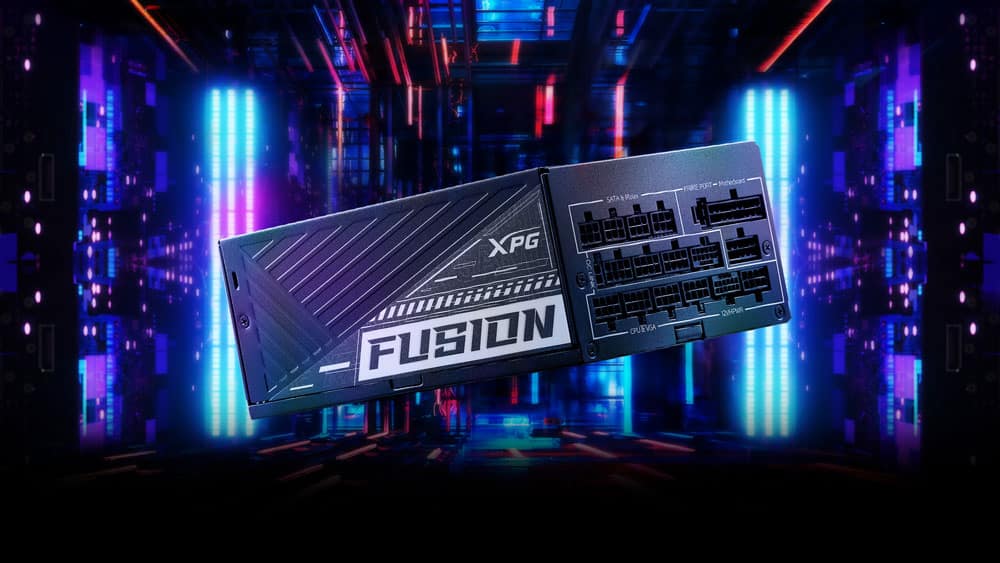
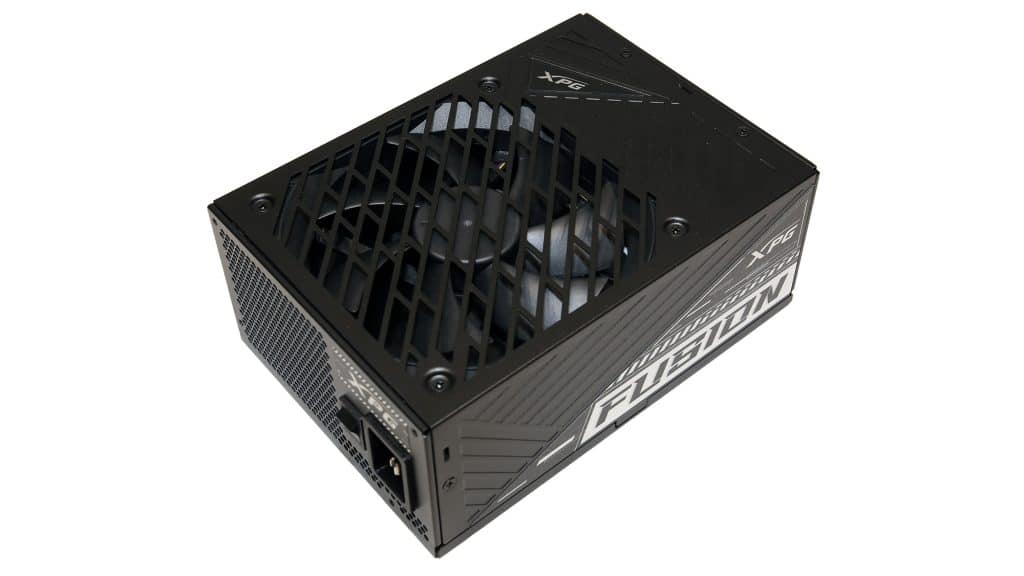
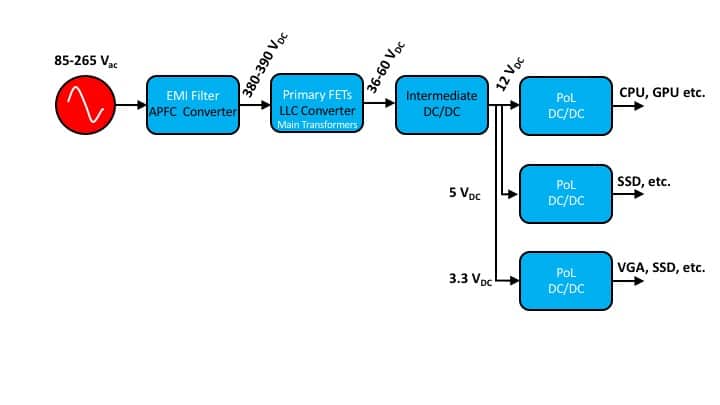
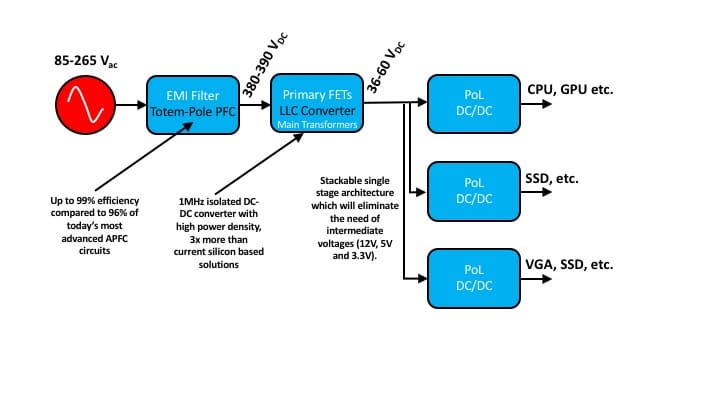
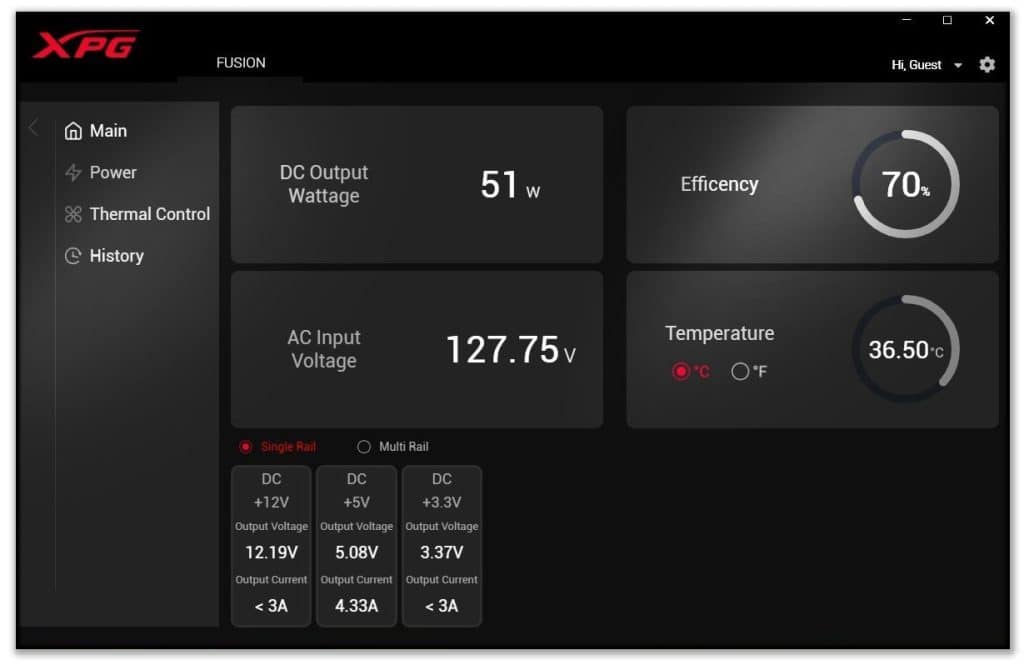
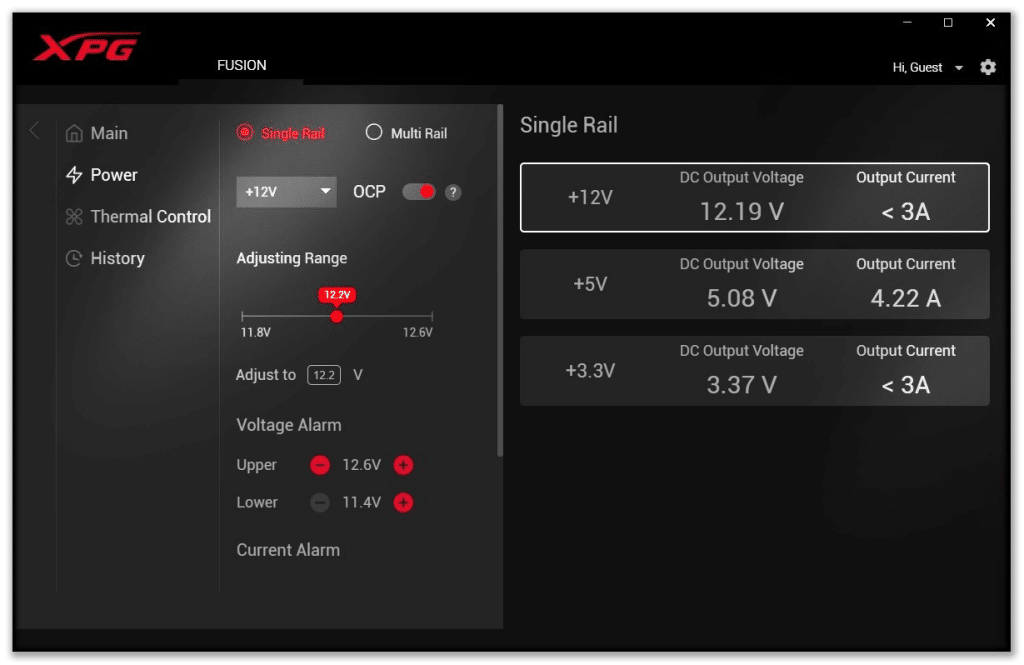
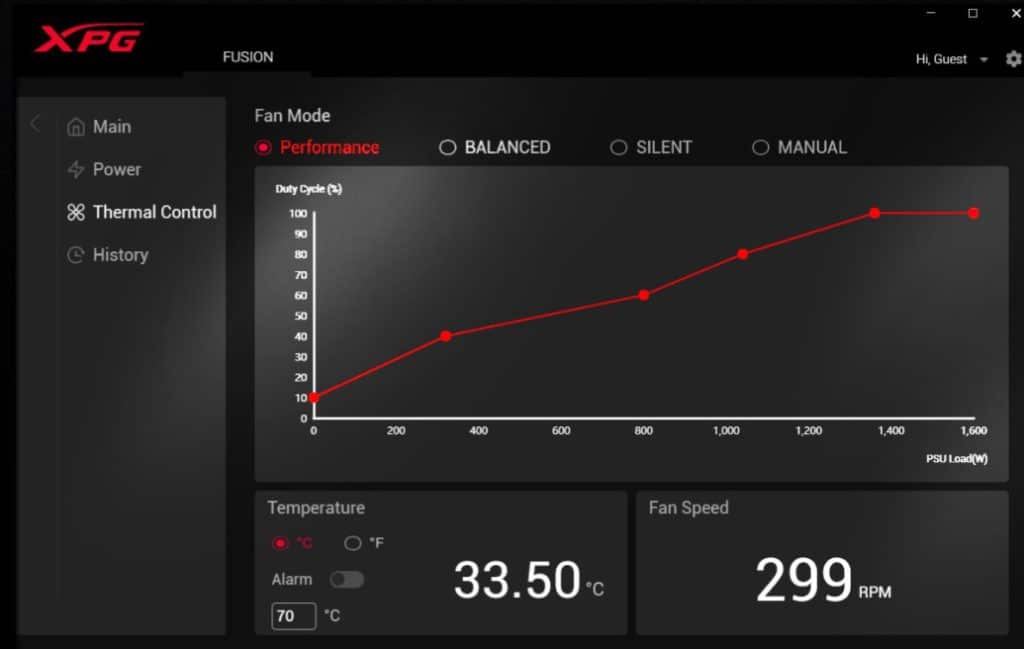
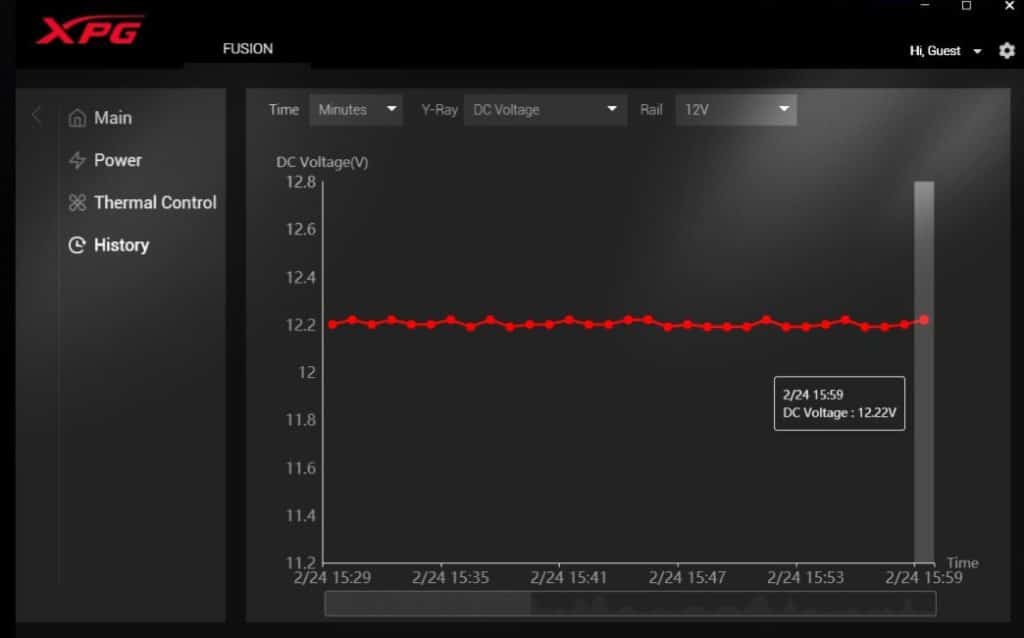

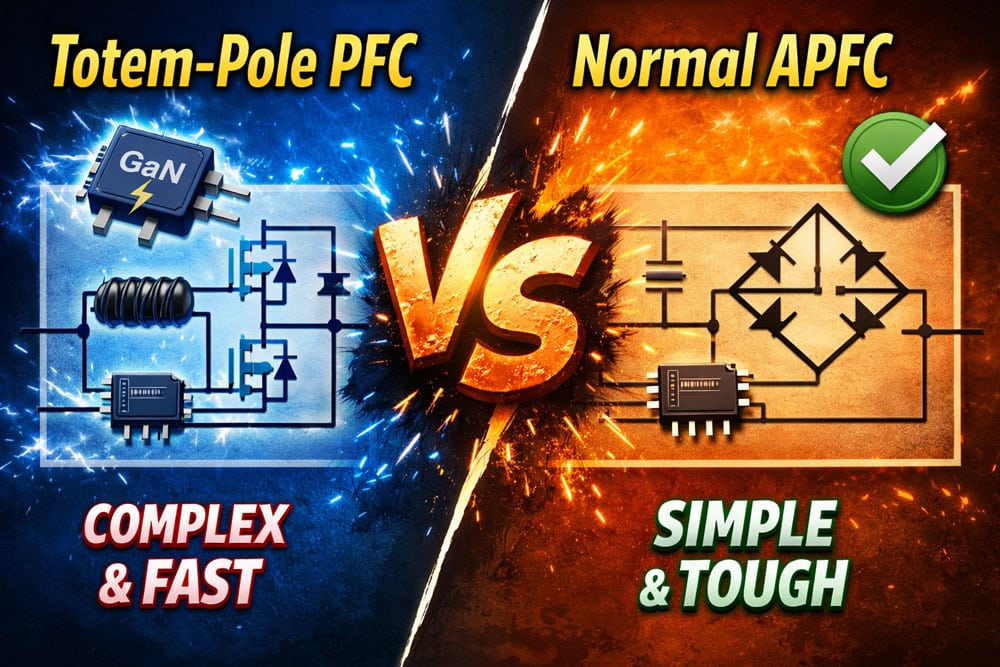
Hi, were there any EMI measurements?
back then we didn’t get EMI
Despite being discontinued, the AX1600i was built by Flextronics and had a less than optimal failure rate. The XPG Fusion 1600 is OEMed by Delta Electronics who has MASSIVE experience with exactly the type of implementation seen with this unit. I doubt we’ll see even 1/10 of the failure rate we saw with the discontinued AX1600i. Delta are experts in this field and, to be honest, this price point seems fair. This is not a “consumer PSU” but one aimed at those seeking the very best PSU. The Seasonic really does not compete with it technology-wise. This is a unit with a 12 year warranty for a reason; Delta are experts in exactly this type of design.
The table with the characteristics indicates the maximum power of 850 watts. It’s not a mistake?
Yes, I will fix it.